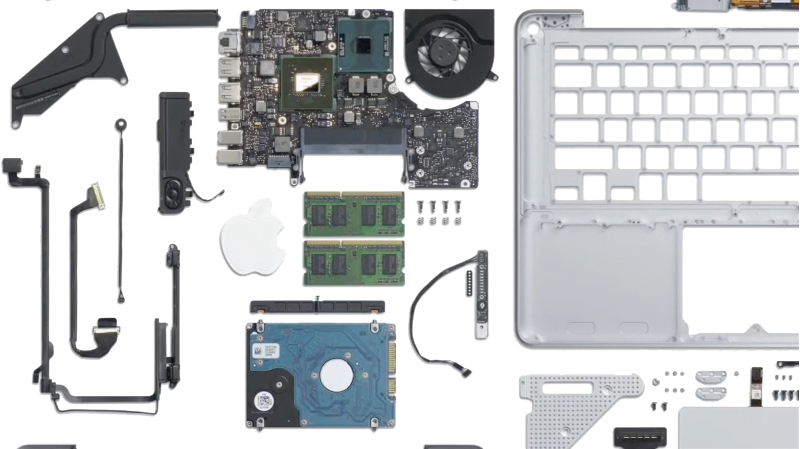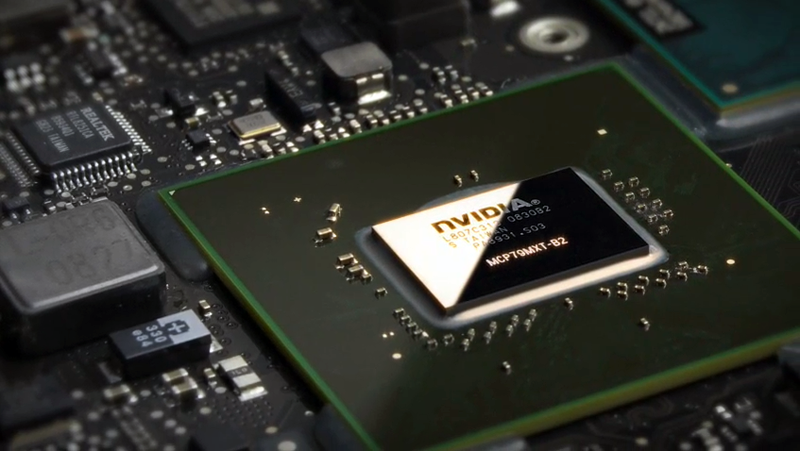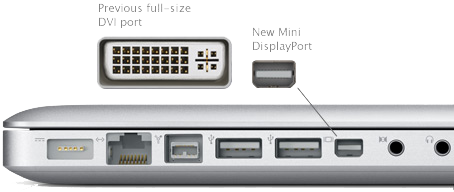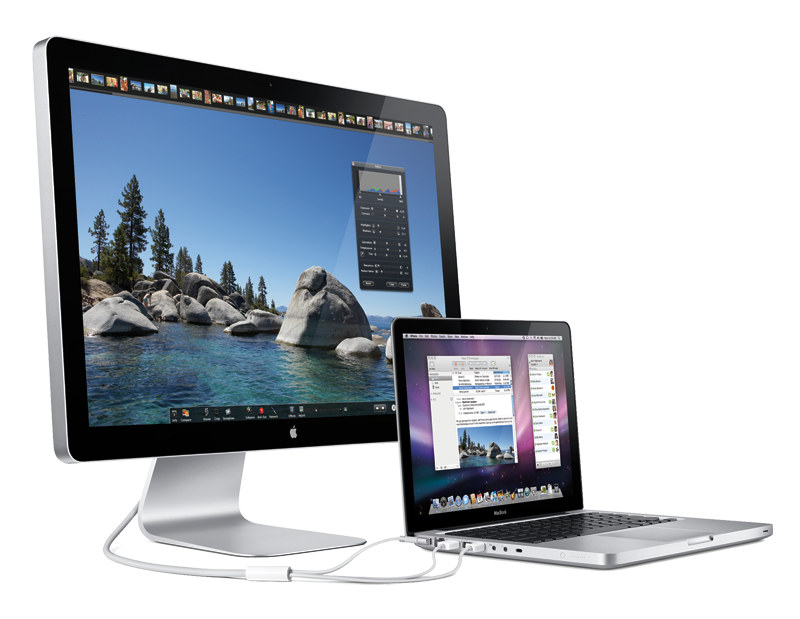A closer look at Apple's move to NVIDIA chipsets, DisplayPort
NVIDIA to go
At its notebook announcement, Steve Jobs said NVIDIA had presented Apple with a new chip it had in development that incorporated the company's high performance graphics platform into a part that would also handle the general interface of a computer's main Intel processor, a task typically performed by a series of components referred to as a chipset.
NVIDIA had planned to sell the part for use in desktop PCs, but Jobs said Apple wanted to use the part in its new notebook design. The result was the GeForce 9400M, a single chip of which 70% is devoted to GPU functions. It provides as much as 6.2 times the graphics performance of the Intel chipset, integrating its own Intel GMA X3100 graphics processing unit, that Apple had been using in its entry level MacBook since late 2007.
The integrated 9400M part even delivers 55% of the 3D graphics performance of the dedicated NVIDIA 8600M GT GPU Apple had been using in its MacBook Pro; the integrated intel parts used in the MacBooks only delivered 11% of the performance of the dedicated NVIDIA CPU available on the Pro line. "In graphics intensive applications, our customers will notice a world of difference," said Bob Mansfield, Apple's Senior Vice President of Mac Hardware.
The new integrated GPU and 'chipset on a chip' appears to be larger than the MacBook's Intel Core 2 Duo processor itself, and leaves the rest of the compact logic board filled with smaller components rather than a series of other large support chips. On the main logic board (below top), the Intel CPU is black, while the NVIDIA part is a shiny silver (below bottom in detail).
Dual GPUs on the MacBook Pro
In general purpose graphics tests, the 9400M part delivers 82% of the high end, dedicated NVIDIA performance used in the previous MacBook Pros. In addition to the Nvidia GeForce 9400M GPU integrated into all of the new portables, which draws 256MB from the installed RAM (plus another 16MB to drive an external display), the MacBook Pro also incorporates an independent NVIDIA GeForce 9600M GT GPU, which has its own dedicated 256MB or 512MB of graphics RAM.
This gives the MacBook Pro the ability to use integrated graphics when running off the battery to increase its lifespan, or to tap the dedicated GPU for even faster performance when power consumption isn't as critical. Switching to the dedicated GPU delivers as much as a 2.3 times boost in performance over using the integrated 9400M, but trims battery life from 5 hours down to four. Windows-based notebook owners will recognize this as the Hybrid SLI feature that NVIDIA introduced earlier this year.
Apple hasn't yet outlined if it is possible for the system to team the processing power of both GPUs for use at once, either at the present or in the future under Mac OS X 10.6 Snow Leopard, which is being designed specifically to spin processor intensive tasks off onto multiple GPUs. Snow Leopard's OpenCL intends to open up the processing potential of GPUs for general purpose math, not just video or graphics related operations.
Introducing DisplayPort
The MacBook, MacBook Pro, and revised MacBook Air also get a mini DisplayPort connector. Jobs announced that the format wasn't limited to the MacBook range and would be placed "on all our machines." The new port replaces the existing full-sized DVI port on MacBook Pros, the Mini-DVI port used on the MacBook (and iMac systems), and the Micro-DVI port of the MacBook Air.
The relatively new DisplayPort standard (now being adopted by a number of PC makers) is backwardly compatible with VGA, DVI, and dual-link DVI displays. On the entire new MacBook line, it also now provides full support for the 2560x1600 resolution of Apple's 30-inch Cinema Display, thanks to the greater graphics muscle afforded by the NVIDIA 9400M GPU.
DisplayPort offers a variety of advantages over DVI, including a more compact connector lacking the rows of pins on DVI cables that are easy to bend; the use of a digital micro-packet signaling protocol that will enable the standard to support higher resolutions than DVI in the future; and streamlined chip-to-chip communication between the video output on the system and the display. DVI requires more control circuitry in external displays and a separate standard is required to connect to the internal display, but DisplayPort addresses both internal and external links, resulting in cost savings and slimmer display housings.
Moving to Mini Display Port
Attaching an existing Cinema Display or other VGA or DVI display to the mini DisplayPort connector requires a converter cable, but Apple's new 24" Cinema Display released alongside the new laptops now includes a mini DisplayPort connector, signaling a shift for all of the company's displays to the new standard.
The new 24" screen also supplies a MagSafe connector for charging a laptop without having to plug in a separate power adapter, as well as a USB connection to support its iSight camera and integrated USB hub.
The 24" Cinema Display is detailed in:
The new MacBook line is outlined in:
 Prince McLean
Prince McLean














 Mike Wuerthele
Mike Wuerthele

 Malcolm Owen
Malcolm Owen
 Chip Loder
Chip Loder

 William Gallagher
William Gallagher
 Christine McKee
Christine McKee
 Michael Stroup
Michael Stroup






